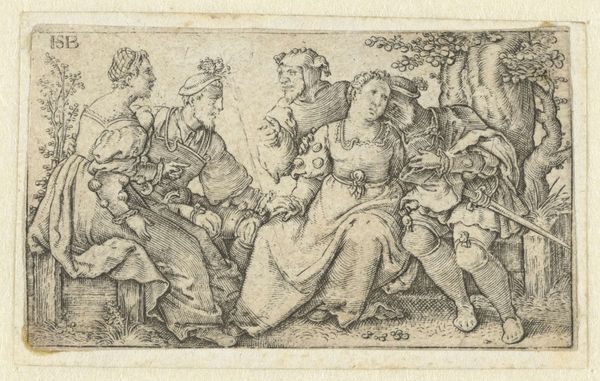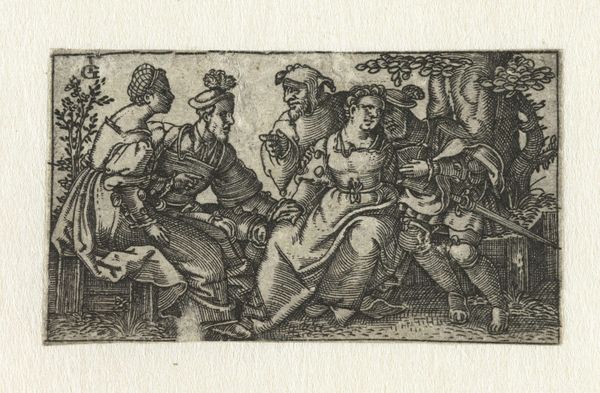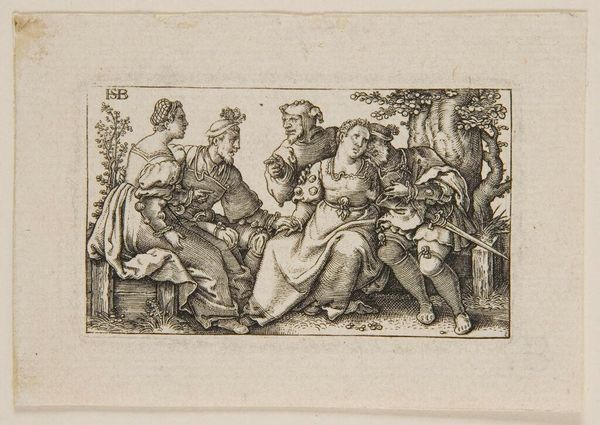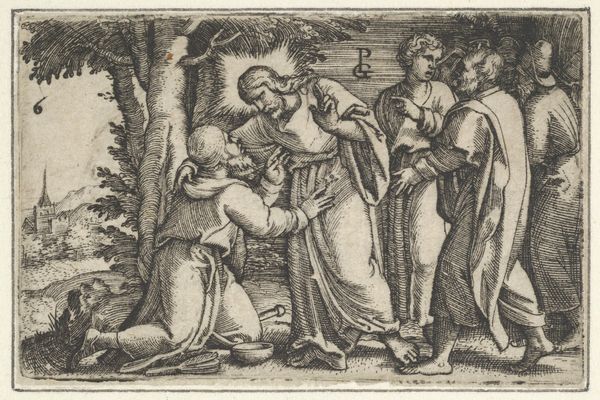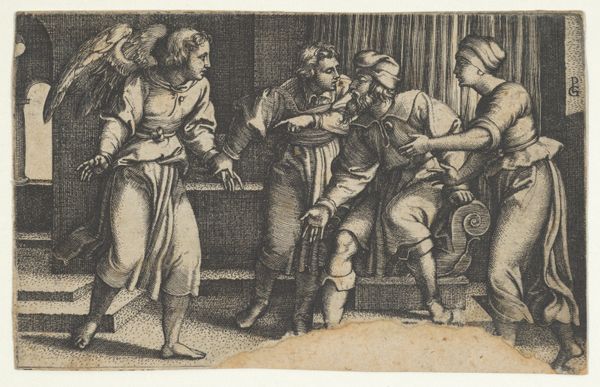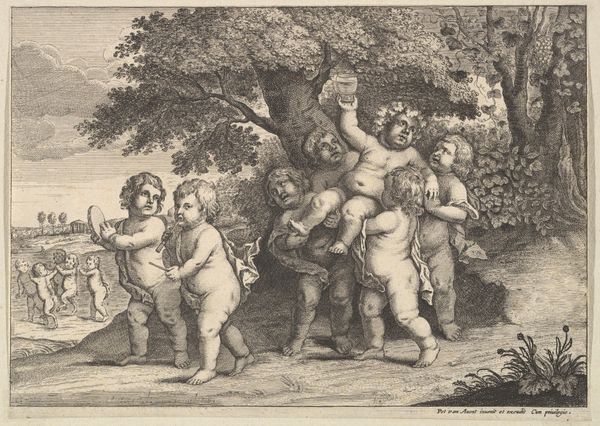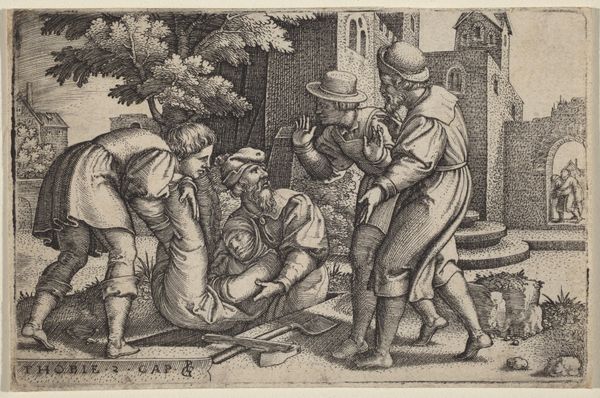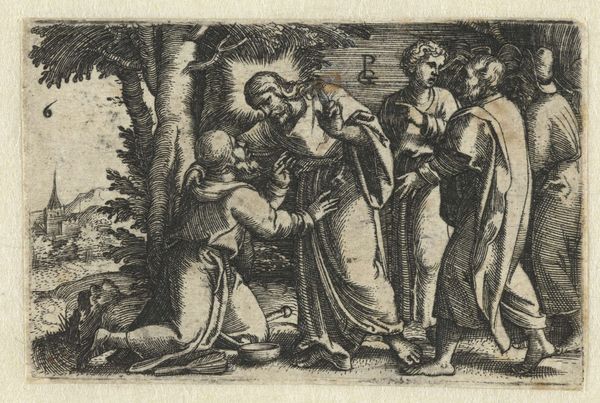
Dimensions: 29.5 × 51 mm (image/plate); 31 × 53 mm (sheet)
Copyright: Public Domain
Curator: Welcome. Here we have Sebald Beham's engraving, "Two Couples and the Buffoon," created around 1535. It offers a glimpse into the social dynamics of the German Renaissance, doesn't it? Editor: It's arresting. The cross-hatching alone is phenomenal—it creates such deep shadows, imbuing the scene with an almost unsettling mood, don’t you think? The detail is also fantastic; you can make out different textures within their garments. Curator: Absolutely. Beham, along with his brother Barthel, was a key figure among the Little Masters—printmakers known for their small-scale, highly detailed engravings, which circulated widely and shaped popular opinion. Editor: You can see the emphasis on line and form to make the piece cohesive, even in the complicated jumble of bodies and cloth, each face remains distinctly expressive. The artist paid attention to how form could highlight drama in subject and narrative. Curator: Precisely. It speaks to the broader cultural context of the time: anxieties around marriage, social status, and perhaps even critiques of morality as the Reformation gained momentum. The buffoon figure adds an interesting layer. Do you see him? Almost like an allegorical character or representation of moral folly in court or amongst the ruling class? Editor: Yes, the positioning creates visual tension; his face lurking behind one of the women generates that drama and unease I initially picked up on. How do you interpret that imbalance? Curator: These scenes offer glimpses into daily life of the early 16th century—values and expectations— and were created as a part of the artist's own attempt to navigate that complex social terrain. I mean, let us also recall that in 1525 Beham was banished from Nuremberg for his radical views, though quickly pardoned. Editor: What stands out, in hindsight, is Beham's sophisticated manipulation of space through varied mark-making; a skill with such tactile, almost sculptural rendering really elevates his expression beyond pure social commentary. Curator: Indeed. Considering that engravings like this allowed the burgeoning middle class access to visual culture, we begin to glimpse just how important they were as conveyors of social and ethical norms—or, indeed, subversive commentaries upon them. Editor: A truly fantastic experience. Beham’s “Two Couples and the Buffoon” displays complex lines and texture which elevate narrative far beyond direct or social commentary; form, indeed, follows function. Curator: Beham has once again demonstrated how he used everyday images and symbols in this artwork in order to influence larger philosophical dialogues. It has been delightful, to be sure.
Comments
No comments
Be the first to comment and join the conversation on the ultimate creative platform.

